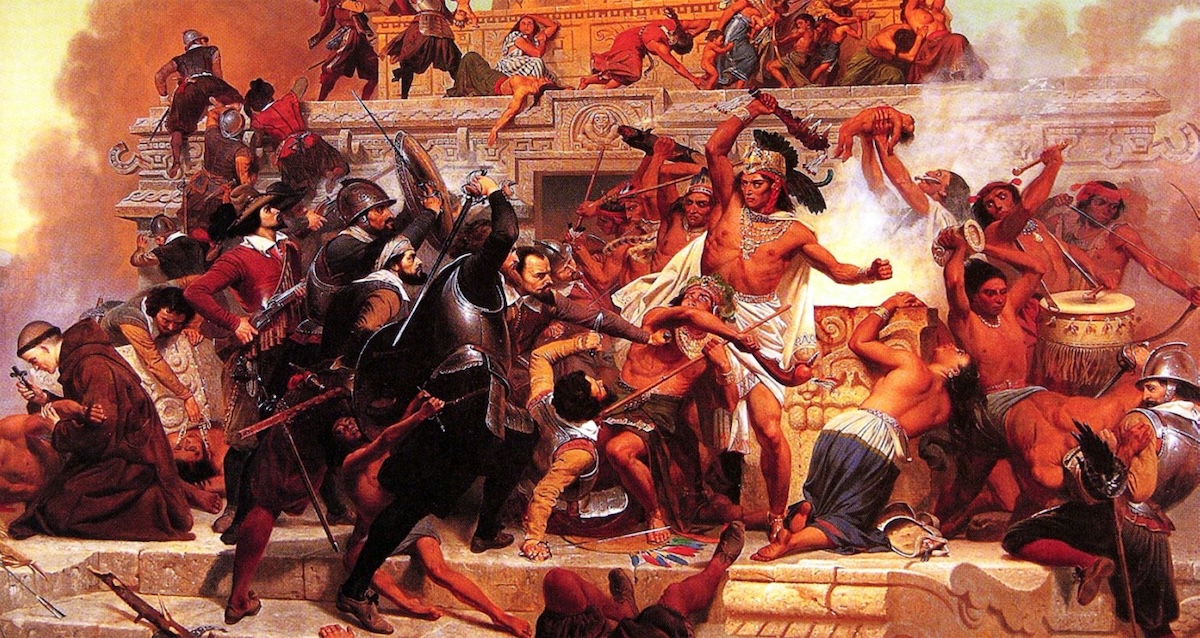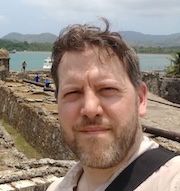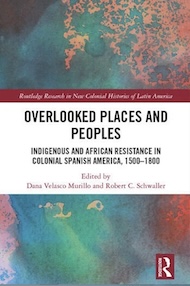‘Overlooked’ peoples’ influence on Colonial Spanish America examined in new book

LAWRENCE — Beginning in the 15th century, the Spanish Empire claimed jurisdiction over “New World” territories that included the Caribbean and much of North and South America. In doing so, millions of people were eventually conquered, uprooted and/or displaced.
“The stories we tell reveal that colonialism is a long process, and it was resisted by people all over the Americas,” said Robert Schwaller, professor of history at the University of Kansas.

“It helps us understand the tenacity of the human spirit. Even at the height of the European imperialism of the day, there were always groups that managed to carve out autonomy for themselves.”
Those stories are captured in a new book titled “Overlooked Places and Peoples: Indigenous and African Resistance in Colonial Spanish America, 1500-1800.” Published by Routledge, the volume focuses on the experiences of Native peoples, Africans and Afro-descended peoples and “castas” (individuals of mixed ancestry) living in regions perceived as fringe, marginal or peripheral. It offers new insight into how and why the inhabitants of these places responded contentiously or cooperatively to Spanish colonialism.
Co-edited by Schwaller and Dana Velasco Murillo of the University of California San Diego, the book evolved from a panel at the 2017 meeting of the American Society for Ethnohistory.
“We were looking at the way in which the Spanish Empire — even though it had claimed to conquer the Americas — still had all these peoples who were basically not conquered. The Spanish were engaging in policies either of trying to further conquer them or negotiate ways to coax them into the empire,” said Schwaller, who first collaborated with Murillo when they were graduate students.

“‘Overlooked Places and Peoples’ pays attention to sites of Spanish encounters with Indigenous and African peoples in the Americas but also in places that we don’t necessarily think about. Off the map, as it were.”
Schwaller also contributes a chapter titled “The Spanish Conquest of Panama and the Creation of Maroon Landscapes, 1513-1590.” It spotlights thousands of enslaved Africans who fled captivity in Spanish Panama and formed their own communities. The self-sufficiency of these “maroons,” along with their periodic raids against Spanish settlements, incited armed conflict as Spaniards sought to kill or re-enslave their populations.
“Our book’s geographic focus gave me an opportunity to think through the spatiality of African maroon resistance,” he said. “The Spanish approach to the geography of Panama helped to create conditions that African maroons exploited. In particular, the way the Spanish systematically depopulated Panama created a landscape that maroons were able to flee into and inhabit.”
But Schwaller is not the only book contributor with that last name. His father, John F. Schwaller, a research associate in Latin American studies and history at KU, wrote the chapter “Native Spanish Frontier Conflict and the Politics of Empire: Viceroy Don Luis de Velasco in New Spain and Peru.” It examines the policies of a territorial governor who had to resolve challenges to Spanish rule from overlooked peoples in both Mexico and Peru.
Who is the better writer in the family?
“I think it depends,” the younger Schwaller said, laughing.
“But we certainly both have a writing style that is meant to be clear and inviting and accessible to readers, regardless of how much background they have in the topic.”
One concept that ties all the chapters together is they avoid focusing only on “famous” individuals.
“We’re dealing with everyday people. And so oftentimes, that person only pops up in one or two historical documents. Many of the chapters reveal how these events affect everyday people, even though we don’t have access to fully fleshed-out biographies devoted to them.”
A KU faculty member since 2011, Schwaller has written other books including “African Maroons in Sixteenth-Century Panama: A History in Documents” (University of Oklahoma Press, 2021) and “Géneros de Gente in Early Colonial Mexico: Defining Racial Difference” (University of Oklahoma Press, 2016). His upcoming book will be a comparison between Panama and Hispaniola in Mexico.
“I hope ‘Overlooked Places and Peoples’ really does open up the types of questions we ask about colonial Latin America. All the contributors came to the project because these were stories we found doing a prior project involving more famous groups, and we ran across pockets of people that we didn’t know much about,” he said.
“These stories all reveal the fact that there is always some persistent resistance to empire, even if we have to find it hiding on the margins.”